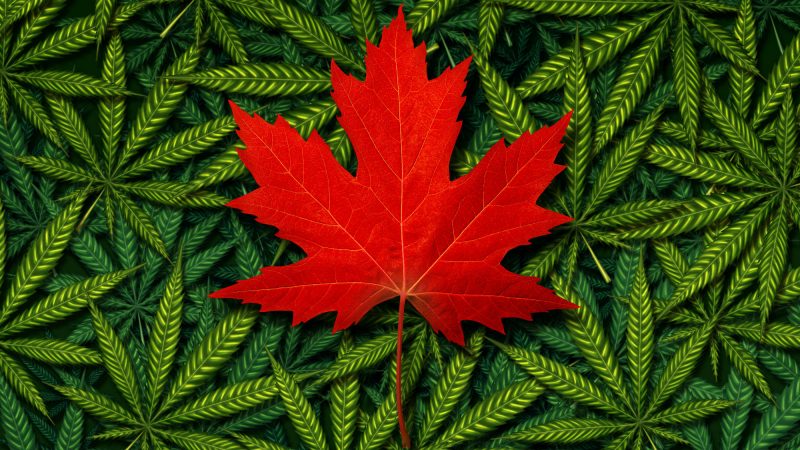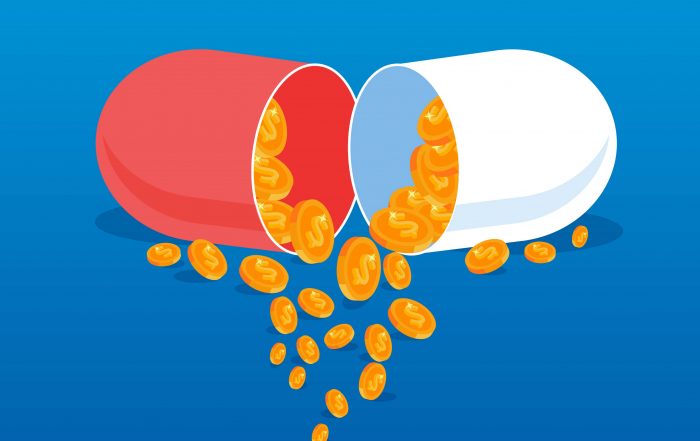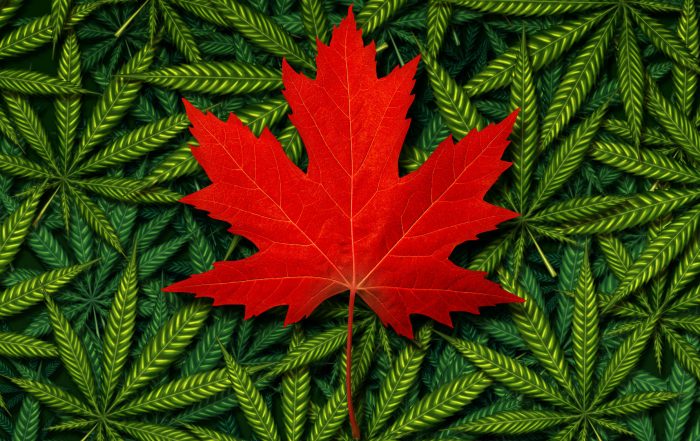
Canada’s Green Rush – Getting Ready for The Legalization of Adult-Use Cannabis
by Sara Zborovski and Ian Trimble
On June 21st, Canada’s Cannabis Act (the Act) received Royal Assent. As of October 17, 2018, Canada will be the first G7 country to legalize adult-use cannabis.Although the cultivation, processing and distribution of cannabis for medical purposes has been permitted in Canada since 2013, the legalization of cannabis for adult-use (i.e. unrestricted to use for non-medical purposes) will bring the birth of a new, robust Canadian industry, subject to significant regulatory oversight by both the federal and provincial governments and a host of enforcement issues.
Below, we outline the current and future regulation of cannabis in Canada and highlight some enforcement considerations under the new regime.
Background: The Current Regulation of Cannabis in Canada
Cannabis is currently regulated federally pursuant to two statutes: the Controlled Drugs and Substances Act (CDSA) and the Food and Drugs Act (FD Act). The CDSA and its regulations control “substances that can alter mental processes and that may harm an individual or society when misused or diverted into an illegal market.” Cannabis is currently on Schedule II to the CDSA, which means it is generally prohibited, except as authorized by regulations or through an exemption for medical or scientific purposes.
There are three regulations made under the CDSA relating to cannabis. The Access to Cannabis for Medical Purposes Regulations (ACMPR) set the framework for the production and distribution of cannabis for medical purposes. The Industrial Hemp Regulations establish conditions under which “industrial hemp” (cannabis plants with leaves and flowering heads containing not more than 0.3% THC1) can be produced for commercial purposes. Finally, the Narcotic Control Regulations provide a licensing regime for the undertaking of certain activities with narcotics, including cannabis.
Cannabis is also regulated in Canada pursuant to the FD Act and Food and Drug Regulations (FD Regulations). The FD Act regulates the safety, efficacy, quality, and advertising of foods, drugs, medical devices, and cosmetics. Cannabis meets the definition of a drug in the FD Act:
drug includes any substance or mixture of substances manufactured, sold or represented for use in (a) the diagnosis, treatment, mitigation or prevention of a disease, disorder or abnormal physical state, or its symptoms, in human beings or animals, (b) restoring, correcting or modifying organic functions in human beings or animals.
The FD Regulations detail the licenses and authorizations that are required to manufacture, package/label, test, import, distribute, wholesale, and export drugs. All drugs must be “market authorized” by way of a Drug Identification Number (DIN). Cannabis products currently available in Canada are (generally) provided pursuant to the ACMPR and do not have a DIN.
The Cannabis Act
When the Act comes into force on October 17th, cannabis will no longer be regulated under the CDSA or its existing cannabis-related regulations, i.e., the ACMPR and existing Industrial Hemp Regulations. The Narcotic Control Regulations will no longer apply to cannabis, its preparations, and its derivatives, but will apply to certain synthetic cannabinoid receptor agonists.
The Act sets the general control framework for cannabis providing for the regulation of medical and adult-use cannabis and industrial hemp. It establishes a series of criminal prohibitions (such as the unlawful sale or distribution of cannabis, including its sale or distribution to young persons, and the unlawful possession, production, importation, and exportation of cannabis) and then provides for authorization, or licences, to permit certain activities. The Act divides responsibility for the oversight and licensing of Canada’s adult-use cannabis supply chain between the federal and provincial governments.
The federal government is responsible for licensing cultivation and processing and for authorizing testing, research, import, and export. In addition, the federal regulator (Health Canada) will oversee the packaging, labeling, and promotion of adult-use cannabis and the approval and oversight of other products containing cannabis (e.g., drugs, medical devices, foods and beverages, cosmetics) to the extent permitted by regulation. The federal government will also continue its oversight of cannabis for medical purposes.
The provincial and territorial governments are each responsible for the distribution and retail sale of adult-use cannabis in their jurisdiction, if they choose. How cannabis will be distributed and sold is not uniform across the provinces and territories. In some, cannabis retail outlets will be exclusively run by the provincial/territorial government while other provinces have proposed a mixed approach of public and private retail. Most provinces/territories will also provide for online sales. In the event a province or territory has not established a system for the distribution and retail of adult-use cannabis within their jurisdiction, their residents will be able to access cannabis from the federal government.
The Regulations
There are four sets of regulations under the Act: the Cannabis Regulations (Regulations); the new Industrial Hemp Regulations (IH Regulations); the Qualifications for Designation as an Analyst Regulations (Cannabis); and the Cannabis Act (Police Enforcement) Regulations. Each of these was enacted on July 11th, when they were published in the Canada Gazette Part II. Below is an overview of the regulations.
The general framework of the Regulations was initially provided by Health Canada in its Proposed Approach to the Regulation of Cannabis, which provided the opportunity for interested stakeholders to provide feedback. Following consultation, Health Canada released its Proposed Approach to the Regulation of Cannabis: Summary of the Comments Received During the Public Consultation.
The Regulations establish the rules and standards that will apply to the production, distribution, sale, importation, and exportation of cannabis by federal license holders. The Regulations establish six classes of licenses (some with sub-classes), which cover the cultivation and processing of cannabis, the sale of cannabis for medical purposes, and the analytical testing of, and research with, cannabis. The Regulations also provide for import and export permits. Some of the key enforcement highlights from the Regulations are set out below.
Enforcement Considerations
Licensing and compliance requirements aside, there are certain elements of the Act and Regulations that pose challenges for industry. Top among them are the requirements for packaging and labelling and the prohibitions on promotion.
Packaging and Labeling
The Regulations set out comprehensive requirements for containers containing, and the labeling of, cannabis products. The immediate container in which a cannabis product is packaged must be child resistant, opaque, or translucent; prevent contamination of the cannabis and keep the cannabis dry; have a security feature that provides assurance it has not been opened; and not contain more than the equivalent of 30g dried cannabis.
Additionally, the interior and exterior surface of any container in which a cannabis product is packaged cannot display any image and must be one uniform color (although the interior and exterior surfaces can be different colors). There are also requirements for the colors of the interior and exterior surfaces of the packaging: they cannot have the luster of metal or have metallic properties in the ink, they cannot be fluorescent or have fluorescent properties in the ink, and they must create a contrast with other mandated elements of the label (namely the yellow color of the health warning background and the red color of the standardized cannabis symbol). The package must have a matte finish and a smooth texture, without any raised features, embossing, decorative ridges, or bulges. Finally, neither the interior nor exterior surfaces of any container can include any hidden feature designed to change the appearance of the container, any feature such as a fold-out panel or cut out, and cannot be capable of emitting a scent or sound.
With respect to labeling, the Regulations provide for the inclusion of certain mandatory information on the label, including details of the cultivator or processor, the product’s brand name and other product information, the warning “KEEP OUT OF REACH OF CHILDREN,” and one of Health Canada’s health warning messages (which must be rotated so that each health warning message is displayed on equal numbers of containers of the cannabis product in a year). Where the cannabis product contains THC in a concentration greater than 10 µg/g, the label must also include the standardized cannabis symbol. The Regulations also stipulate location and size requirements for this mandatory information.
In addition to the mandatory information, the Regulations permit the inclusion of one “brand element,” other than a brand name, on a label, subject to certain requirements.
Industry has raised some concerns with the government’s “plain package labeling” approach to cannabis products. Top among them is the concern that the proposed approach will thwart the government’s intention of keeping cannabis out of the hands of children and youth and its goal of combating the black market. Industry has explained that to achieve these goals, it will be vital for licensed producers to be allowed to differentiate products to adult consumers, and that the packaging requirements will make this difficult.
Promotion
The Act sets out the rules for promoting adult-use cannabis products. At a high level, the Act adopts the same approach to restricting the promotion of cannabis that is currently in place for the promotion of tobacco in Canada.
“Promotion” is defined broadly in the Act as follows:
promote in respect of a thing or service, to make, for the purpose of selling the thing or service, a representation — other than a representation on a package or label — about the thing or service by any means, whether directly or indirectly, that is likely to influence and shape attitudes, beliefs and behaviours about the thing or service.
All promotion of cannabis is prohibited, unless specifically authorized in the Act. The Act states:
Unless authorized under this Act, it is prohibited to promote cannabis or a cannabis accessory or any service related to cannabis, including
(a) by communicating information about its price or distribution;
(b) by doing so in a manner that there are reasonable grounds to believe could be appealing to young persons;
(c) by means of a testimonial or endorsement, however displayed or communicated;
(d) by means of the depiction of a person, character or animal, whether real or fictional; or
(e) by presenting it or any of its brand elements in a manner that associates it or the brand element with, or evokes a positive or negative emotion about or image of, a way of life such as one that includes glamour, recreation, excitement, vitality, risk or daring.
From an enforcement perspective, we can expect to see some action around (b) and (e) above. Canadian courts have interpreted these provisions in connection with the promotion of tobacco, and have provided some guideposts to industry. For example, promotion that could be appealing to young persons has been interpreted to mean that the promotion is particularly attractive and of interest to young persons, as distinguished from the general population.
However, despite these guideposts, we can expect that the cannabis industry will seek clarity from the regulator on the application of these prohibitions to cannabis, either by way of formal request or by way of using promotions that push the envelope, to gauge the regulator’s response.
The Act then provides certain exceptions, namely for “informational promotion” and “brand preference promotion,” each of which is defined as follows:
informational promotion means a promotion by which factual information is provided to the consumer about
(a) cannabis or its characteristics;
(b) a cannabis accessory or its characteristics;
(c) a service related to cannabis; or
(d) the availability or price of cannabis, a cannabis accessory or a service related to cannabis.
brand-preference promotion means promotion of cannabis by means of its brand characteristics, promotion of a cannabis accessory by means of its brand characteristics or promotion of a service related to cannabis by means of the brand characteristics of the service.
The Act permits the promotion of a cannabis product by means of informational promotion or brand-preference promotion if the promotion is: in a communication that is addressed and sent to an individual who is 18 years of age or older and is identified by name; in a place where young persons are not permitted by law; or communicated by means of a telecommunication, where the person responsible for the content of the promotion has taken reasonable steps to ensure that the promotion cannot be accessed by a young person.
In order to take advantage of these exceptions, we’re seeing industry promote cannabis brands in bars, and big (and creative!) efforts are underway to gather contact information for adults to whom they can send communications.
Of particular concern for industry are the restrictions on companies’ branding and use of logos and the inability of industry to educate consumers about their cannabis products. These concerns relate to both plain packaging and the very restrictive rules around product promotion. In each case, the rules for cannabis were modeled on the existing rules for tobacco. Although the Act permits informational promotion, if the restrictions that have developed in the context of tobacco are applied to promotion of cannabis, there is a concern that effective and appropriate education will be difficult. Industry has criticized the government for failing to recognize the differences between cannabis and tobacco and the resulting confusion for consumers.
Health Canada is responding to industry’s creative efforts. In one case, a licensed producer launched a website promoting its new adult-use brand featuring soft-focus photographs of happy, attractive people socializing and doing yoga, with the slogan “Find your Light.” The varieties of cannabis were named to evoke moods: dream, unwind, soothe, balance, ignite, and gather. Within a few days of launching the website, all the content was removed after Health Canada “reminded” the company about the existing prohibitions on the promotion of narcotics (which are arguably less strict than upcoming prohibition on the promotion of cannabis products).
As of the writing of this article, there have been a few instances in which Health Canada has required that a licensed producer remove certain information from its website on the basis that the information was improper promotion. It will be important for industry and other stakeholders to watch closely in the coming months for any other enforcement actions from Health Canada.
- THC or delta-9-tetrahydrocannabinol is the most researched cannabinoid and is responsible for the way your brain and body respond to cannabis, including the high and intoxication.
Programs
Update Magazine
August/September 2018










